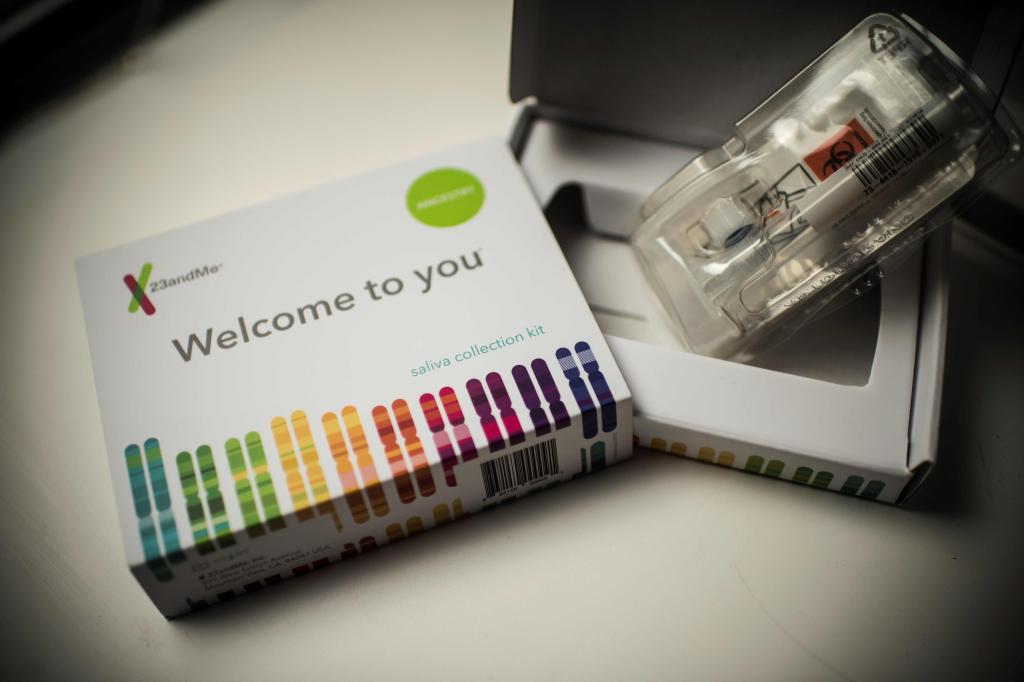23andMe's Crisis: Workforce Cuts and Strategies for Recovery
Explore how 23andMe is tackling its financial crisis through workforce cuts and a renewed focus on consumer genetic testing for future growth.

Key Points
- 23andMe
is laying off 40% of its workforce and discontinuing its therapeutics division to focus on its core consumer genetic testing business.
- The company faces significant financial challenges, with a net loss of $667 million last year and a declining revenue trend.
- Despite the crisis, 23andMe is committed to rebuilding trust and exploring sustainable growth through subscription services and improved data security.
The genetic testing industry has once been heralded as a groundbreaking field, with companies like 23andMe leading the way in making personal genetic data accessible to consumers. However, recent developments have revealed a stark reality as 23andMe grapples with substantial financial challenges. The company has announced plans to cut 40% of its workforce—over 200 employees—while discontinuing its therapeutics division as part of a major restructuring initiative aimed at focusing on its core consumer business.

A Difficult Crossroads
Under the leadership of
, the company has come a long way since its inception in 2006, but the road ahead is fraught with uncertainty. Following a data breach in 2023 that affected over 6.9 million users, the company is not only faced with regulatory scrutiny but also growing distrust among its consumer base. As the public becomes increasingly concerned about data privacy, the demand for its signature DNA testing services has seen a significant decline. In the last quarter, 23andMe reported $44 million in revenue, down from $50 million the prior year, marking its seventh consecutive year-on-year revenue decline.
Strategic Shifts Amidst Challenges
Wojcicki's recent statements indicate a shift in focus. The company will now concentrate efforts solely on the consumer genetic testing market, halting the development of new therapeutic drugs that had been seen as a promising avenue for growth. It’s important to note that the decision to discontinue drug development is not merely a cost-cutting measure; it is a strategic pivot back to the company’s roots. Wojcicki expressed her commitment to supporting affected employees and emphasized the importance of building a sustainable business. In her words, “Becoming more sustainable has been a top priority.”
Understanding 23andMe's Financial Landscape
Despite these strategic shifts, the financial outlook remains bleak. 23andMe has never reported a net profit and has suffered immensely from rising losses estimated at $667 million for the last fiscal year—double that of the previous year. With cash reserves dwindling to $127 million, the need for additional funding is urgent. The company’s market value has plummeted from a peak of $6 billion in 2021 to just $150 million, raising serious questions regarding its future viability.
Signals of Hope and Future Possibilities
Even amid turmoil, there are signs of potential recovery. The stock reacted positively, jumping 7% at the announcement of workforce cuts, indicating that the market is cautiously optimistic about the restructuring. In addition, Wojcicki remains steadfast in her vision, stating that she believes in the company’s mission to offer personalized health and wellness through genetic insights. This resilience can serve as an inspiring model for other companies facing adversity.
Furthermore, there’s potential in its subscription-based model, which made up 21% of revenues in the last reported quarter. Growing this aspect of the business could provide a more stable revenue stream moving forward. Though the company projected significantly higher subscriber counts in the past, it still retains a loyal customer base that could be tapped into for future growth.
The Path Ahead
As 23andMe navigates these choppy waters, a focus on transparency, data security, and consumer trust will be paramount. The landscape for genetic testing companies is continually evolving, and adapting to consumer needs while ensuring ethical practices will be crucial for survival. Active steps toward rebuilding the board with new independent directors also signal a willingness to embrace change and seek collaborative solutions.
While the road to recovery is undoubtedly challenging, the journey is not insurmountable. With a committed leadership team and a heartfelt mission, 23andMe may find a way to reclaim its position as a leader in the genetic testing industry. The next few years will be a critical phase for the company as it works to prove its resilience in a competitive market.


